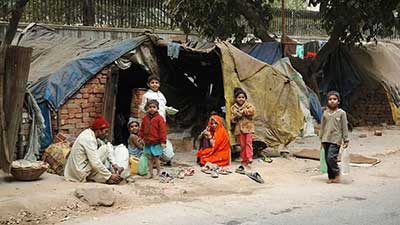Date: 03/12/2022
Relevance: GS-3: Inclusive growth and issues arising from it; Indian Economy and issues relating to planning, mobilization of resources, growth, development and employment;
Key Phrases: Goods And Services Tax, Consumption Survey, Gini Coefficient, All-India Debt And Investment Survey, Periodic Labour Force Survey
Why in News?
- A raging debate has emerged regarding the poverty level during the last decade which has witnessed large catastrophic events both policy-induced and natural like droughts in 2014 and 2015, demonetization, roll out of India’s goods and services tax (GST), and finally the covid pandemic.
- The impact on the economy is clearly visible, with average growth decelerating to its lowest in the last three decades.
Who Gained and Who Lost?
- The balance of evidence is largely in favour of the last decade being a lost one as far as poverty reduction is concerned but it also points to a decline in inequality.
- Consumption expenditure from the National Statistical Office has been the mainstay of inequality measurement.
Findings of Consumption survey:
- The findings from the consumption survey revealed an increase in poverty between 2011-12 and 2017-18.
- The consumption survey data also showed that inequality actually fell, albeit marginally.
- Subsequent Periodic Labour Force Survey (PLFS) data confirmed the trend of a decline in consumption expenditure and worker income after 2017-18.
Status of Gini Coefficient:
- The rural Gini used to measure inequality fell from 28.7 in 2011-12 to 25.8 in 2017-18. The decline was larger in urban areas, with the Gini reading falling from 36.7 to 32.9.
What is the Gini Index?
- The Gini index or Gini coefficient measures income distribution across a population.
- Developed by Italian statistician Corrado Gini in 1912, it often serves as a gauge of economic inequality, measuring income distribution or, less commonly, wealth distribution among a population.
- The coefficient ranges from 0 (or 0%) to 1 (or 100%), with 0 representing perfect equality and 1 representing perfect inequality.
- Values greater than 1 are theoretically possible due to negative income or wealth.
All-India Debt and Investment Survey (AIDIS):
- AIDIS which is used to track wealth inequality, lends credence to the above trend.
- Unlike the consumption and PLFS surveys, the wealth inequality estimates from AIDIS do not show a sharp decline, but these do confirm that inequality in wealth in 2019 may not have risen, or stayed stagnant at the 2012 level.
- There are other private surveys that suggest that inequality may have gone up, but even in these, the rise seems marginal.
What do these trends represent?
- It appears to be a case of levelling down i.e., the decline in inequality is not a result of any transfer of income from the rich to the poor or faster growth of the latter’s income, but a result of a faster decline in income among the middle class and well-off.
- Disaggregated analysis of all the available evidence seems to back this explanation.
- It also fits in with the broad trend of a slowdown in the Indian economy, which has affected not just the poor, but almost every section of the income spectrum with the possible exception of the very rich.
- Earnings data from the PLFS also confirms this by showing a sharper decline in the earnings of regular workers compared to casual workers.
- It is also likely that the poor were in a better position to weather the economic shocks and slowdown because of an expansion of India’s social protection base over the past two decades.
- The Public Distribution System has seen a massive expansion after the enactment of the National Food Security Act and the free rations given during the pandemic.
- Even schemes such as the rural employment guarantee were helpful in insulating the poor in these difficult circumstances.
Implications for overall growth and income distribution in the economy:
- While welfare measures may have provided basic security to the poor, a decline in inequality driven by incomes of the non-poor does raise questions on the sustainability of economic growth in the medium to long run.
- The evidence in recent years confirms weak demand in the economy led by weaker discretionary spending.
- It did not only contribute to the slowdown, but it also delayed a growth revival.
- If it persists, more obstacles in the way of a broad-based economic revival may emerge.
Conclusion:
- Although it is necessary to strengthen the net of social protection for the poor, however, any plan for an economic revival will be incomplete without accompanying efforts to revive the purchasing power of India’s large middle class.
Source: The India Express
Mains Question:
Q. Inequality has risen substantially from the 1980s onwards, due to profound transformations in the economy such as deregulation and the reforms of 1990s. Comment. (UPSC 2019)








